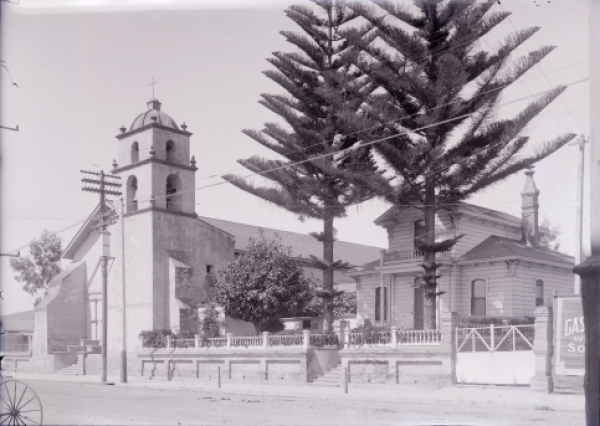by Richard Senate
Main Street today was originally the Spanish highway that linked all the Missions and settlements. It was California’s first thoroughfare, “El Camino Real” (The Royal Highway), extending from La Paz, Baja California to Sonoma. Why was the name changed? The early American settlers wanted nothing to do with Spanish after the Mexican-American War. The name was altered by Ordinance Number Ten of the newly incorporated City of San Buenaventura in 1867.
Another historic street, “Figueroa,” positioned before the Old Mission, is not named after the popular California Governor of that name, but rather after the town blacksmith who operated a shop on that street in 1850. “Palm Street” derived its name from three towering date palms planted by the Mission, which served as landmarks for the town. At one point, there was even a suggestion to rename the town “Palm City.” Although the trees are no longer standing, the street name persists as a reminder of these iconic landmarks.
The origins of some street names are straightforward to trace, such as “Oak Street,” named after a tall oak tree that once graced the area. “California Street” is believed to have been named around 1850, coinciding with California’s admission to the Union. This street connected the town to the beach and facilitated the transportation of cargo from ships anchored offshore to the community via small boats called “lighters,” before the construction of the wharf in 1872.
“Thomson Street” honors local landowner Dixie Thomson, renowned for his dancing horses showcased in parades. While the street was laid out during Spanish times, it initially served as a horse racing track, reflecting the popularity of the sport among early settlers. Interestingly, the Chumash were recognized as skilled horsemen and jockeys, often hired by ranch owners to race their thoroughbred Arabians. Betting was commonplace, with entire ranches sometimes changing hands in a single race.
“Poli Street” commemorates wealthy landowner and doctor Manuel Antonio Rodriguez de Poli, who resided in a large adobe overlooking the town and bay. Although his former residence was removed to make way for the Hill Street School, an apartment building now occupies the site. Dr. Poli was widely beloved for his altruism, never charging for his medical services, which he considered more of a hobby than a profession.
“Ventura Avenue” originally connected Ventura and the Ojai Valley, initially known as “Canada Street.” It traversed a smaller road named “Crooked Palm” Road, named after a deformed palm tree that once stood there. Perhaps a twisted palm could be replanted to honor the memory of the long-gone tree?
The streets of Ventura serve as tangible reminders of its rich and diverse history, each name carrying with it a unique story and legacy.

